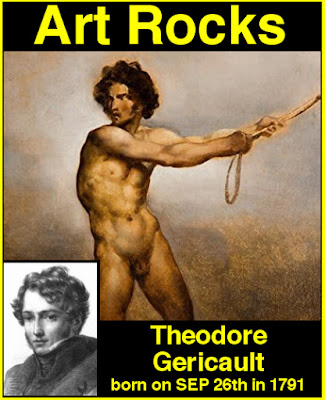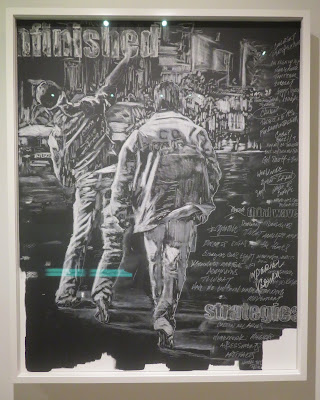Tuesday, September 29, 2020
Monday, September 28, 2020
Dinner In Five! Five Ingredients, That Is
With water and salt as a given, can you guess?
Yes, sausage and pasta!Maryland Zoo: Fare Thee Well, Meister Stubby

a. k. a. Stubby von Stubmeister, the Stubinator, Stubarolla, My Man Stubbs! You're gonna be missed, you good Rhino!
It is a wonder that most modern zoos belong to the Association of Zoos and Aquariums and as such maintain a collective database of their animals. Several species participate in Species Survival Programs (SSP) which maintain extensive databases complete with studbooks and recommendations for the transfer of animals with rarer DNA between members in order to facilitate breeding. In the way of the Southern White Rhinoceros, the breeding programs in the AZA basically have three tiers. The first belongs of institutions with large herd and the space to create more natural settings for the animals to live, interact and breed. Examples of these would include the San Diego Wildlife Park in California, The Wilds in Ohio, and Rum Creek Center for the Conservation of Tropical Ungulates in Florida. The second would include the many zoos with small population of two or three who also have the facilities to allow for breeding. These would include many zoos like the Virginia Zoo in Norfolk, Virginia, the Gladys Porter Zoo in Brownsville, Texas and the North Carolina Zoo in Ashville, North Carolina. The third option are zoos not set up for breeding who just keep 1 to three animals as species ambassadors. Depending on circumstances zoos can slip between options two and three. Zoos in option three status often keep members of the same gender who can co-habitat well, like the males at the Houston Zoo in Texas and the Detroit Zoo in Michigan. Another option would be keep females who are unable to conceive due to age or some other factor, like the Knoxville Zoo in Tennessee, which used to be home to a very successful breeding pair.

 And this brings us back to Stubby. He was born at the Knoxville Zoo on September 15, 1993. On November 12, 1996, not long after his 3rd birthday, he was transferred to the Maryland Zoo in Baltimore where he became a companion animals to a female named Daisy. Daisy was born in Africa in 1973, and after being captive elsewhere, was transferred to the Maryland Zoo in 1992. The pair shared a strong bond. In the wild a rhinoceros who makes it to 30 is considered very old. Daisy was 48 when she died of natural causes in April of 2016. She was the oldest mammal at the zoo, and her longevity was lauded at the time as an example of is possible for this species with optimal conditions and care.
And this brings us back to Stubby. He was born at the Knoxville Zoo on September 15, 1993. On November 12, 1996, not long after his 3rd birthday, he was transferred to the Maryland Zoo in Baltimore where he became a companion animals to a female named Daisy. Daisy was born in Africa in 1973, and after being captive elsewhere, was transferred to the Maryland Zoo in 1992. The pair shared a strong bond. In the wild a rhinoceros who makes it to 30 is considered very old. Daisy was 48 when she died of natural causes in April of 2016. She was the oldest mammal at the zoo, and her longevity was lauded at the time as an example of is possible for this species with optimal conditions and care.
It is safe to say that the loss was felt profoundly by Stubby who was basically without a Rhinoceros companion for the first time in his life. Almost a year later to the date of Daisy's passing, a 4-year-old male Southern White Rhinoceros named Jaharo arrived from The Wilds animal park in Cumberland, Ohio to join Stubby. Keepers new that their would be a period of adjustment. What they did expect was that the two male rhinos would simply never get along. It was a predicament that they were committed to work at for the long haul, when the dark side of fate intervened. In November of 2018, Jaharo developed troubling symptoms and soon was clear that he was suffering from some illness. Tests revealed an auto-immune related condition that was unique to him--never before seen in Rhinoceros. Experts took on the case and experimental treatments were undertaken. He seemed to be responded well for a time. Then on the last Sunday in January 2019, Jaharo died after a relapse.
Again, Stubby was on his own. After considering options, the AZA's SSP working group determined that a change in venue was the best move to Stubby. Under this recommendation, today, September 28, 2020 is Stubby's final day at the Maryland Zoo. After nearly 24 years, he will leave tomorrow for a trip to Florida where I believe he will join (after a period of quarantine) the auspices of staff at the aforementioned Rum Creek Center for the Conservation of Tropical Ungulates. The facility is home to around 45 Southern White Rhinoceros. He will be able to breed there, as well, and in doing so hopefully pass on his unique genetic code to the next generation of his species.
In exchange, the Maryland Zoo will receive from Rum Creek later in the year a pair of acclimated adolescent males who will join our family and continue the tradition of education and participation in the conservation of this amazing species.
One of the little things that Stubby loves is wallowing in his clay pit. Over the past couple of years, that pit has been filled with clay of an orange hue. It's hard to imagine him without his coat of orange!Saturday, September 26, 2020
Delaware Art Museum: Post 1960 American Art
 On the new wing's second floor are a series of three galleries of American art. The largest of the three is dedicated to American contempor- ary and modern art after 1960. You will find a handful of works by some important, easily recognizable artists, and what I like even more are the artist I did not know. It's an eclectic mix of staples, avant garde and visionary works. The later is often completely ignored by museums outside places like the American Visionary Art Museum in Baltimore.
On the new wing's second floor are a series of three galleries of American art. The largest of the three is dedicated to American contempor- ary and modern art after 1960. You will find a handful of works by some important, easily recognizable artists, and what I like even more are the artist I did not know. It's an eclectic mix of staples, avant garde and visionary works. The later is often completely ignored by museums outside places like the American Visionary Art Museum in Baltimore.
Among artist you would most likely recognize is an interesting sculpture by George Segal. More than a plaster cast of the human form in common clothes, this one includes a backdrop with a light element. Not something that I've ever seen before in his works.
Here you can see a sculpture by Anne Truitt and directly behind it is a Jim Dine "Heart" painting.
Another is a horse sculpture by Deborah Butterfield. She has spent a lifetime taking found objects, both natural (wood, driftwood) and man-made (scraps of metal) and turning them into dynamic, elegant, even graceful representations of horses. Years ago now I had the good fortune of attending a guest artist dinner and lecture at the Phillips Collection art museum here in Washington, DC were she presided and presented a post diner lecture on her work, techniques and inspirations. One particularly fascinating take away was about the sculptures made from found wood. Although the original pieces are made form actual wood, the completed sculpture is a bronze cast of the original that is then treated to retain the appearance of natural wood. The point being to ensure the work's durability and longevity. It was a fascinating evening. The work in the Delaware art museum is made of found metals.
"unfinished business 'it may not be televised'" 2012
Friday, September 25, 2020
Wednesday, September 23, 2020
Delaware Art Museum: The Pre-Raphaelites
One of the Mecca draws of the Delaware Art Museum is their beautiful collection of Pre-Raphaelite works. A movement begun with a brotherhood of seven artists around a supposed notion of creating a purer, more authentic aesthetic with a penchant for detail, the natural world and Romanticism. Idealized images bordering on androgyny and often embracing themes out of classic and medieval literature. The movement included a wide range of creatives as it's influence expanded and others became associated with it. The collection features examples of fine woodworking, furniture, fabric, stained glass, ceramic, wallpaper and illustration--and I've probably left something out.
Having laid that out, I must confess, I am not a great fan of the genre. Much of it isn't even that good. Apart from the fact that it's part of this collective off-shoot of art, I don't think some of the principles would be particularly noteworthy today. It's not a blanket criticism, there are some lovely works.
The galleries themselves are rich and contain a wide representation of works my the major members of the movement, as well as, some lesser "also includeds." Regardless of how you feel about the art, you can't help by find the venues inviting and informative--and if it is your cup of tea? You could hardly do better."The Green Butterfly" circa 1879-81
Tuesday, September 22, 2020
EARTH POSTAGE: Amazing Animal Species series, BATS
Sunday, September 20, 2020
Advice














































